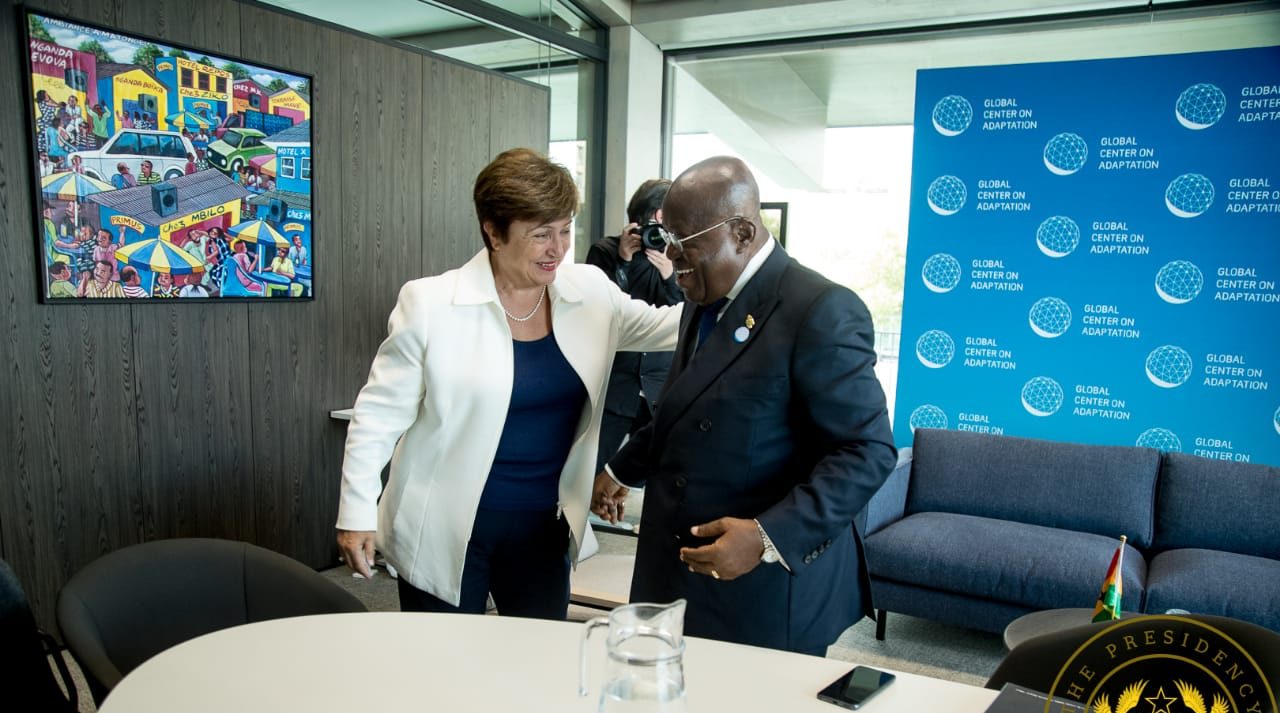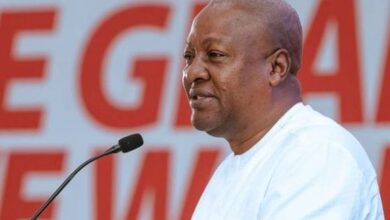On 6th October 2023, a delegation from the International Monetary Fund (IMF) held a press conference in Accra after a two-week review of Ghana’s $3 billion IMF programme that was initiated in May with a $600 million down payment from the Fund. Present at the conference was a chastened finance minister, Ken Ofori-Atta, who had had to swallow his pride and request aid after invoking the Bible to swear that Ghana would never go to the Fund because “we are a proud nation.” He said little of substance at the press conference, even when he appeared to read his answers to journalists’ questions from a cheat sheet.
Also present was the Governor of the Bank of Ghana, Ernest Addison, who read out a brief statement and for the most part remained quiet.
Perhaps, the most legitimate question of the day, asked by Bloomberg’s Ekow Moses, about the lack of resilience in Ghana’s economy despite claims of “robust” growth by the Fund, was cheekily rubbished by Information Minister Kojo Oppong-Nkrumah, who MCeed the occasion. This provided the finance minister with the cover to dodge the question.
After the conference, the Fund issued a statement that waxed lyrical about the “authorities’ strong policy and reform commitment,” improvement in the “fiscal and external position,” and what it called “signs of economic stabilization”, among many other platitudes that the Fund is known for. However, data from the Ghana Statistical Service easily confirm Mr. Moses’s fears: an economy in distress, with its industrial core in meltdown mode, potentially resulting in growing joblessness, poverty, and long-term loss of government revenue, all of which threaten the viability and sustainability of the Fund’s programme.
For example, apart from the mining and quarrying sector, which expanded by 3.5%, overall industrial production declined by nearly 2% in the second quarter of 2023, with the following sub-sectors driving the decline (year-on-year): construction (-11.7%); electricity (-5.1%); water supply, sewerage, waste management, and remediation activities (-3.3%); and manufacturing (-0.5%). In the services sector, “trade, repair of vehicles, and household goods” shrank by -5.3%, while in agriculture, “forestry and logging” declined by -4.2%. The first quarter was worse, with a decline of 3.2% of the broad industrial sector, mainly water and sanitation, construction, and manufacturing. This means the first six months of 2023 was an industrial disaster for Ghana, and a setback for broader economic transformation.
Why is the industrial core of the Ghanaian economy imploding when it should be flowering under the Fund’s seemingly successful programme? There are many plausible explanations. Bank of Ghana data, for example, show that between December 2022 and August 2023, business credit, the oxygen for economic growth, declined at a year-on-year average of 16.4%, after adjusting for inflation. The Bank’s two-faced policy of recklessly printing money for the government, which fuelled inflation, and then raising interest rates to fight the same inflation, appeared to have hurt businesses and consumers and left inflation largely intact.
Between January 31, 2022, and September 25, 2023, the Bank increased its policy (interest) rate steadily from 14.5% to 30.0%. The only “benefit” of this doubling of the rate was the dubious distinction of Ghana having the second highest interest rate in Africa, after Zimbabwe, and the third-highest inflation on the continent, after Sierra Leone and Sudan, further proof that the simplistic use of interest rates to fight inflation in Ghana has always been counterproductive. Despite this obvious failure, the BoG governor pledged at the press conference to do more of the same! Another culprit of the imploding economy is the government’s yet again reckless imposition of new and higher taxes under duress from the Fund. This inevitably choked off business activities and consumer spending, worsening a crisis that started almost as soon as the government took office in 2017.
No, it’s not Covid or Ukraine
The government, with the support of the IMF, has been blaming Covid (and, to a limited extent, the Ukraine war) for Ghana’s economic woes, as if Ghana was the only country affected by the pandemic. Other countries, equally affected, sometimes worse, have moved on, with many even prospering. Why not Ghana? Because, as noted above, Ghana’s economic decline began long before the world even heard of Covid, thanks to a lethal combination of vindictive and haphazard policies, facilitated by a pervasive culture of incompetence, arrogance, corruption, and a fake religiosity that saw millions in public funds criminally diverted towards the construction of a cathedral instead of much-needed economic infrastructure.
For example, quarterly growth in electricity use, a key indicator of industrial and broad economic activity, peaked at 20% in the first quarter of 2018 and slowed to 0.09% by the third quarter of 2019, whilst manufacturing growth slowed from 13.8% in the second quarter of 2017 to 6.3% in quarter four of 2019. After the government froze payments to “certain” contractors, the construction sector, dominated by the government, began to slow from 7.6% in the second quarter of 2017, until it went into negative territory in the second quarter of 2019, resulting in an outright decline of 4.4% for 2019.
The overall economy was dealt a body blow from the botched reforms of the financial sector, which posted an average negative growth of 7.3% from 2017 to 2019, worsened in part by mounting loan defaults by contractors owed by the government. Indeed, in November 2019, five months before Covid (and over two years before Ukraine), when the finance minister presented the 2020 budget to Parliament, he predicted that GDP growth would decline from 8.1% in 2017 to as low as 4.6% in 2022, contradicting the government’s manifesto pledge of growing the economy by “double-digit” over four years. This was an economy in meltdown mode before COVID-19 or Ukraine.
If anything, Covid was a financial bonanza for the government. In 2020, the IMF gave Ghana $1 billion to combat Covid. Eventually, Ghana lost 1,461 of its citizens to the pandemic, the 22nd largest loss in Africa, implying about $685,000 per Covid death. By contrast, South Africa, with the largest COVID deaths in Africa – 102,595 – received from the Fund about $42,000 per death, or 6% of Ghana’s. (As of September 2023, the policy rate for South Africa was 8.25%, with an inflation rate of 5.4%, compared to Ghana’s 30% policy rate and 38% inflation).
In 2021, the Fund gave Ghana another $1 billion for economic recovery from COVID-19, a figure that somehow was omitted from the Auditor General’s December 2022 report on COVID-19 expenditures. The report nevertheless stated that the government eventually raised GH¢21,844,189,185 in the name of COVID-19, which included additional contributions from the World Bank, the European Union, the African Development Bank, and the Bank of Ghana, among others. But the government spent GH¢11,750,683,059 (about 54% of the total, much of it siphoned by the procurement mafia) on Covid and diverted the rest into what it called “budget support”. Shockingly, in 2021, it imposed the COVID-19 Health Recovery Levy as part of punitive measures against an already ailing economy in need of tax relief.
Nor was Covid the only source of financial bonanza for the government. Between 2018 and 2021, it raised over $11 billion in Eurobonds, almost three times the $4.5 billion successive governments raised between 2007 and 2016, or 71% of all Eurobonds since 2007. There was also spectacular growth in oil revenue from GH¢218 million in 2016 to GH¢6.billion in 2022.
Clearly, the government’s problem is not lack of money – or the threat of a budget or trade deficit. It is a corrosive leadership deficit and the pig-headed policies thereof. Unless the Fund and the government confront this inconvenient truth and act accordingly – rather than whitewashing statistics – the economy’s implosion will continue and the Promised Land that the finance minister offered Ghanaians when he haughtily rejected IMF aid will continue to remain a costly illusion. *
The writer is a former DG of the National Development Planning Commission and was the author of the “Conceptual Framework for Building Economic Resilience During and After Covid-19,” prepared for the UN’s Economic Commissions in Africa, Asia and the Pacific, West Asia, and Latin America and the Caribbean (2020).
Story by: Nii Moi Thompson





